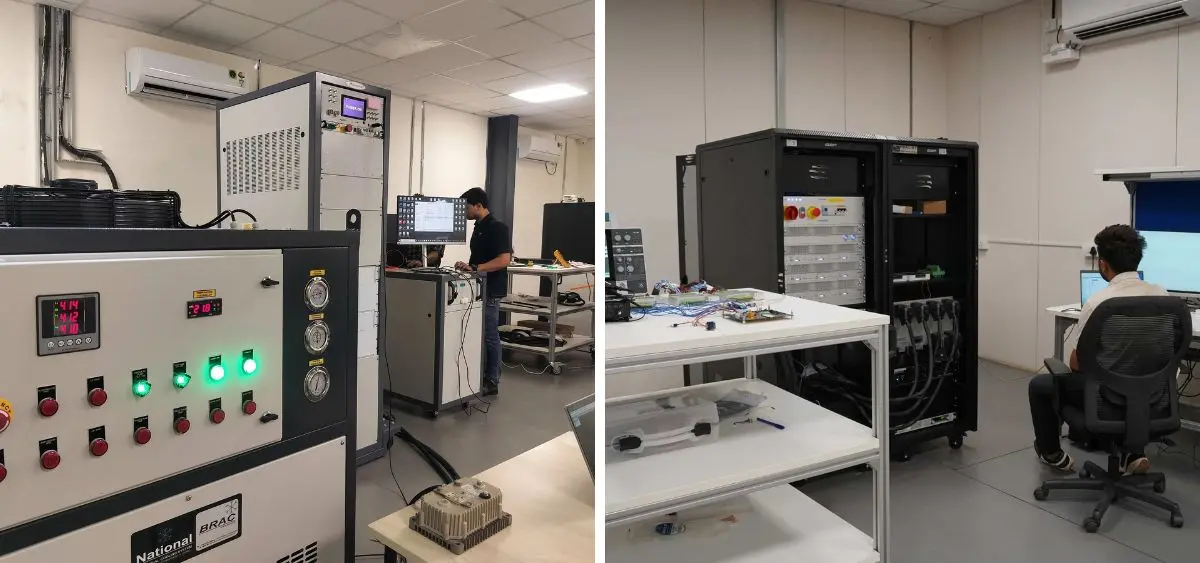The future of electric vehicles in India is about to get a high-tech makeover! The ARAI-Micelio Digital Twin Lab for EV Testing in India has now become fully operational, promising to redefine how EVs are designed, tested, and validated. Imagine developing safer, smarter, and more efficient vehicles—without the endless costs and time of building multiple physical prototypes. From startups to major manufacturers, this cutting-edge facility is opening doors to virtual testing, AI-powered simulations, and real-world scenario analysis. Curious how this innovation is set to accelerate India’s EV revolution and change the rules of automotive engineering? Keep reading!
What is the Digital Twin Lab?
The Digital Twin Lab is a Common Engineering Facility Center (CEFC), set up under the Ministry of Heavy Industries’ Capital Goods scheme. It operates on a hub-and-spoke model to maximize accessibility across India:
- Hub: The main facility is located at ARAI’s headquarters in Pune.
- Spokes: Satellite facilities are at Micelio Discovery Studio, Bengaluru, and the Indian Institute of Technology (IIT) Guwahati, providing broader access for industry players nationwide.
This structure ensures that companies, regardless of size or location, can leverage cutting-edge technologies to develop EV solutions efficiently.
Transforming EV Testing in India
Traditionally, EV testing has relied heavily on building and iterating physical prototypes, which is expensive and time-consuming. The Digital Twin Lab shifts much of this testing into a virtual environment, offering several key advantages:
- Cost and Time Efficiency: Virtual prototypes allow companies to test multiple designs and materials without building numerous physical models.
- Democratized Access: Smaller firms and startups can use these high-end technologies via a pay-per-use model, lowering financial barriers to innovation.
- Enhanced Safety: Advanced simulations replicate real-world scenarios like battery wear, thermal behavior, and crash tests, helping prevent failures before physical testing.
- Indigenous Development: Indian companies can now design safe, efficient, and market-optimized EV solutions tailored to local conditions.
Key Features and Advanced Technologies
The lab integrates a suite of technologies to create a virtual replica (digital twin) of an EV’s components and systems:
- Hardware-in-Loop (HIL) Testing: Real hardware, like Battery Management Systems (BMS), is tested in a simulated environment, allowing engineers to evaluate Electronic Control Units (ECUs) under multiple conditions without extensive physical prototypes.
- Simulation Software Suite: Tools for product design, material selection, and process simulation, including Integrated Computational Materials Engineering (ICME) for advanced battery material development.
- AI and Machine Learning (AI/ML): Enables predictive maintenance, fault detection, and continuous improvement of digital twins using real-world operational data.
- Specialized Testing Rigs: Physical testing equipment, such as battery and cell cyclers, motor test benches, and environmental chambers, complements simulations to validate performance under various conditions.

The Road Ahead
The ARAI-Micelio Digital Twin Lab represents a transformative leap for India’s EV sector. By merging simulation, AI, and real-world testing, it not only accelerates innovation but also ensures safety and reliability in the rapidly evolving EV landscape. This lab is set to become a cornerstone of India’s vision for a sustainable, indigenous EV industry.
Related Articles:-

